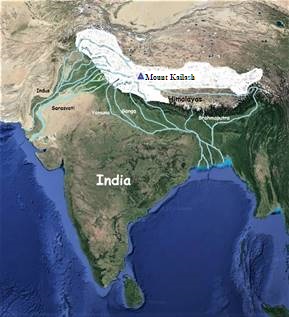Hindu mythology is not always religious. In fact, I would say most of it is not religious.
What it is, is a collection of ancient stories that were intended to communicate information of various kinds in an entertaining manner and, where possible, with a moral lesson.
Since Gods and Goddesses are the main characters in many of these stories, they have come to be revered as sacred mythology, which is the reason they have survived the ravages of time, but at the core, these are ancient stories that were aimed at educating.
Having said that, not all the stories have survived the ravages of time unscathed. Some of them have become corrupted or lost their original context, which makes them difficult to understand. But people continue to tell them because they are part of the cannon of sacred stories about the Gods.
One of my pastimes in recent years has been to try and figure out the more mysterious stories from Hindu mythology by piecing together clues available to me.
In this post, I want to try and decode the mysterious connection between Shiva (शिव) and the Himalayas (हिमालय). If you have any insights or information that you think I should take into account, please do share them in the comments!
Shiva and Gangā
The story goes that Bhagirath (भगीरथ), a king of the Ikshvaku (इक्ष्वाकु) lineage, ruled over a kingdom in the Northern Plains of India, just south of the Himalayas.
At that time, Gangā (गंगा, the River Ganges) was a goddess in the Heavens. Bhagirath wanted Gangā to come down to Earth and flow through his kingdom. Gangā agreed but was concerned about the logistics of getting from Heaven to Earth. Her waters being so plentiful, she was worried that earth would be washed away if she leapt straight down. She asked Bhagirath to find a way for her to descend more gently.
Bhagirath went to Shiva, who kindly offered to be Gangā’s stepping-stone. When Gangā leapt from the Heavens, Shiva trapped her in his topknot and gently let her down through his matted hair. And thus, Gangā came down to Earth, bringing fertility and prosperity to Bhagirath’s kingdom.

Sounds like a fanciful tale, but could it actually be a lesson in geography?
The Ganges descends from the highest part of the Himalayas (= the Heavens?), emerging as numerous little streams that cut their way through the Himalayas (= Shiva’s matted hair?) before joining together to become a large river by the time it reaches the plains (Earth?).

In fact, the lowest range of the Himalayas is called Shivālik (शिवालिक), which literally means “Shiva’s forehead” in Sanskrit. The clues are all there, waiting to be deciphered…
Shiva and Mt. Kailash
A Very Special Geography
The map below is a rough image of the Indian subcontinent toward the end of the last ice age (which lasted from roughly 115,000 to 11,700 years ago). I used a relief map of the subcontinent and marked the rivers to make them more clearly visible.
The white part shows the extent of the Himalayan ice cap toward the end of the ice age (based on this visualization by Zurich University researchers). I have also roughly marked the path of River Sarasvati based on where scientists think it once flowed before drying up several thousand years ago.

During the ice age, almost the entire Himalayan region was covered in snow, earning it the title of the “third pole” after the North and South poles. In fact, “him-ālaya” itself means “snow-abode” in Sanskrit.
Of course, over the millennia, as earth gradually warmed, the Himalayan ice cap has melted and receded. It is now largely gone, but there is still enough left to feed most of the North Indian rivers. The only one that has dried up is the Sarasvati.
Now, there is something very special about India’s geography.
The interior parts of India (the Northern Plains) are quite far from the coast. This makes them very dry, as they get almost no rain except during the monsoon (June-September). Despite this, the Northern Plains are some of most fertile and densely populated parts of India, and have been for millennia.
This is thanks to the glacially fed Himalayan rivers that crisscross the entire region. These perennial rivers have been the lifeblood of North India since ancient times. Is it any wonder they are so revered?
Mt. Kailash

Going back to the map above, notice how most of the glacial rivers of North India originate around Mt. Kailash. Kailash (कैलाश) is not the highest Himalayan peak, but it is a distinctively shaped peak in the highest part of the Himalayas, which is where all the rivers that water the North Indian plains originate.
Hindus consider Mt. Kailash to be Shiva’s home. Could this just be a way to mark and revere the location where so many of the rivers that give life to the subcontinent originate?
Reverence and gratitude for the things that nourish and sustain us is programmed into the religious DNA of India. Sadly, we sometimes forget what our stories were trying to tell us.
Shiva and the Himalayas
His home is in the highest part of the Himalayas; the lowest ranges of the Himalayas are his forehead; his wife, Parvati, is the daughter of the Himalayas; and Himalayan rivers (represented by Ganga) use his matted hair to descend gently from the Heavens to Earth.

There is obviously a beautiful connection between Shiva and the Himalayas. But what is it…? You tell me!
Before I go, here is a nice drone video of the Ganges and her journey through the Himalayas and across the Northern Plains.
Leave a Reply